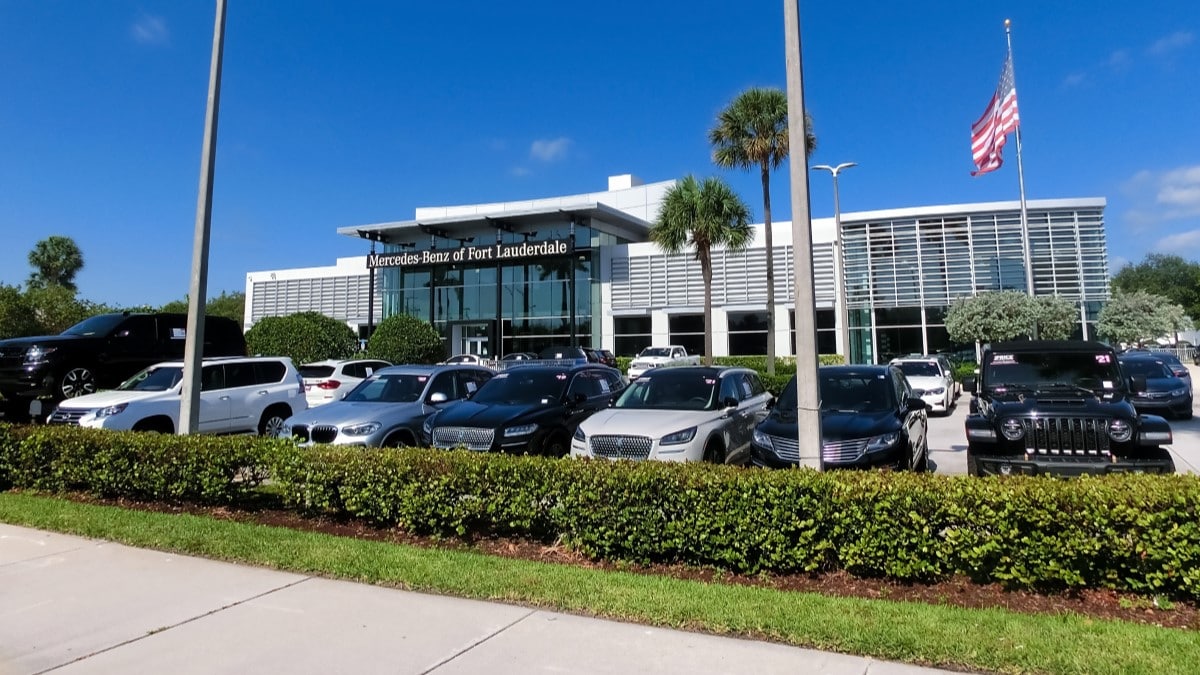New car prices have been falling for most of 2023 but rose slightly last month. The average American new car buyer paid $47,936 in October – less than a third of a percent higher than one month before.
It’s not a sign of things to come. Prices are down 1.4% since this time last year and 3.5% since their peak last December.
“New-vehicle prices in October were mostly unchanged from September,” said Rebecca Rydzewski, research manager at Cox Automotive. “The only big mover last month was Tesla, which continues to shift pricing at a surprising pace. The price shifts at Tesla in 2023 showcase just how dynamic pricing can be with a direct-to-consumer sales model.”
Cox Automotive is the parent company of Kelley Blue Book.
The tiny price bump can partly be attributed to the effects of an auto workers’ strike that has already settled. The strike won significant raises and better job security for United Auto Workers (UAW) union members but barely dented prices because of a unique strategy.
A Careful Strike Kept Prices in Check
The UAW struck all three of Detroit’s major automakers at once for the first time in history. But it also adopted an incremental strategy that kept the strike small. Workers walked off the job at a handful of factories, adding more over time as talks continued.
According to Cox Automotive inventory calculations, that strategy meant fewer cars went unbuilt than would have been the case if the UAW had conducted a traditional strike against a single automaker.
Transaction prices for some strike-impacted brands climbed month-over-month in September. Chevrolet, Chrysler, and Dodge pulled back on discounts and saw their average transaction prices increase. But Ford, Jeep, and Ram brands all had incentives grow month over month and saw their final sale prices fall.
The rest of the industry was unaffected. Despite the longest strike in decades, most dealers have more than enough cars to sell.
Non-Luxury Prices Held Steady
The average price for a new non-luxury vehicle in October was $44,331, an increase of less than 1% from one year ago and down $189 from revised September numbers. Incentives comprised 4.9% of the average sale, up from 2.3% last October to 4.7% one month earlier.
But truly affordable cars remain the minority of sales.
Only three vehicle segments had average transaction prices below $30,000 in October – compact cars, subcompact cars, and subcompact crossover SUVs.
Just two models had average sale prices under $20,000 — the Kia Rio and Mitsubishi Mirage. Both vehicles will be discontinued in the coming years.
Luxury Prices Climbed
In October, prices of new luxury vehicles increased by $757 over September but were down 7.4% year-over-year to $62,903. Tesla, the luxury market leader by volume, led the month-over-month increase in average luxury prices. Last month, Tesla’s average transaction prices were higher by 5.2% compared to September, reversing ten straight months of transaction price declines for the electric car maker.
Despite generally higher prices, luxury brand sales were strong in October, with the luxury share of total sales increasing to 19.4% — a near-record and up from 18.6% in September.
EV Prices Rose
The average price for a new electric vehicle in October was $51,762, up from a revised $50,326 in September.
The month-over-month price increase was driven by transaction price gains with Tesla Model 3 (up 10%) and Model Y (up 3%). Tesla has cut prices sharply several times in 2023 but may pull back on that strategy under pressure from investors after a punishing third quarter.
Even with the gains in October, average EV prices are down more than $13,000 year-over-year. Notably, the average price paid for a Tesla Model X is down more than 23% year-over-year.








